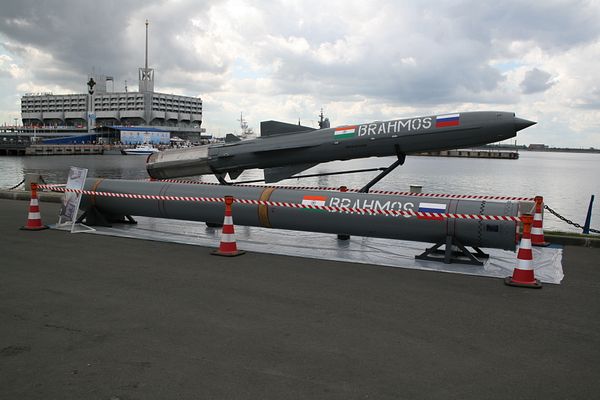
In a first, India has entered into agreement with the Philippines for the sale of BrahMos supersonic cruise missile. Philippine Secretary of Defense Delfin Lorenzana, in a notice of award on December 31 to BrahMos Aerospace Private Ltd, detailed the Philippines’ acceptance of the deal for $374 million. If it works out, it will be the first major Indian defense sale of indigenously produced equipment.
Although India has a large domestic defense manufacturing base as well as a large defense research entity, the Defense Research and Development Organization (DRDO), New Delhi has been unsuccessful in breaking into the global defense market as a supplier. Indeed, India’s domestic defense industry is not even able to supply its own forces. It remains heavily dependent on imported weapons and for decades has been one of the world’s largest arms importers. This is despite India manufacturing Asia’s first indigenous jet fighter in the 1960s, and despite political commitment to domestic defense research and development since the 1950s.
India’s defense industry itself is large but it caters mostly to India’s massive armed forces. Much of the equipment it produces is manufactured under license from foreign firms. Over the last few years, the Indian government has once again emphasized domestic defense research and manufacturing as well as exports. As a consequence, India’s defense exports have risen and the Indian government has set an ambitious target of $5 billion in exports by 2025. India has also begun to emphasize private sector participation in the defense industry.
The BrahMos itself was developed in cooperation with Russia and is based on the Russian P800 Onyx/Yakhont cruise missile. The current versions have a range of about 500 km but the export variant of the missile has a range of 290 km in order to keep it under the Missile Technology Control Regime (MTCR) restrictions of 300 km. After first being tested in 2004, the missile was inducted into the Indian services, beginning in 2007. Different versions of the missile are in service with the Indian Army, Air Force, and Navy.
The version being supplied to the Philippines is a naval version and the Philippine defense secretary said that “the Coastal Defense Regiment of the Philippine Marines will be the primary employer of this modern strategic defense capability of the Armed Forces of the Philippines.” Explaining the agreement on a social media post, Lorenzana said, “As head of procuring entity (HOPE), I recently signed the Notice of Award for the Philippine Navy Shore-Based Anti-Ship Missile Acquisition Project. … it includes the delivery of three batteries, training for operators and maintainers as well as the necessary Integrated Logistics Support (ILS) package.”
Other than India’s interests in arms exports, it is also noteworthy that India is supplying the missiles to Southeast Asia, specifically to a country that is currently in a territorial dispute with China. India has extended security assistance to a number of countries in the region. Other countries including Vietnam, Indonesia, and Thailand are interested in buying the BrahMos missiles, too. Reportedly discussions with Indonesia are at an advanced stage with it being “on top of the agenda” during the Indonesian defense minister’s visit to India in July 2020. India has extended defense and security assistance to Vietnam, training its navy in Kilo-class submarines. In addition, India has also provided Lines of Credit to Vietnam to buy Indian defense equipment. India is also building 12 High Speed Guard Boats under these Line of Credit, five of which are being built by the Indian company, Larsen & Toubro in India, whereas the remaining seven are being built by Hong Ha Shipyard Company in Vietnam. The first of these vessels were launched in December 2020 during the summit meeting between the prime ministers of India and Vietnam.
The strategic aspects of the BrahMos sale and India’s assistance to Southeast Asian countries should not be minimized. Given that these countries are facing a threat from China and have active ongoing disputes with the Asian giant, helping them increases the burden that China faces in the South China Sea. It is, of course, in India’s interest to make sure that China has enough problems in its backyard to divert its attention and reduce the pressure that it can bring to bear on India and the Indian Ocean. India’s ongoing territorial dispute with China makes this a lot more important, as do China’s growing naval capabilities.
Supplying missiles such as the BrahMos is one way to apply China’s own strategy against itself. Over the last two decades, China has emphasized anti-access/area denial (A2AD) with the U.S., building capabilities that threaten the stronger U.S. Navy in the South China Sea. Supplying anti-ship missiles such as the BrahMos helps ensure that smaller countries can also employ their own A2AD strategies against China.
The Strategic Logic Behind India’s Sale of BrahMos Missiles to the Philippines
Source: Frappler

0 Comments